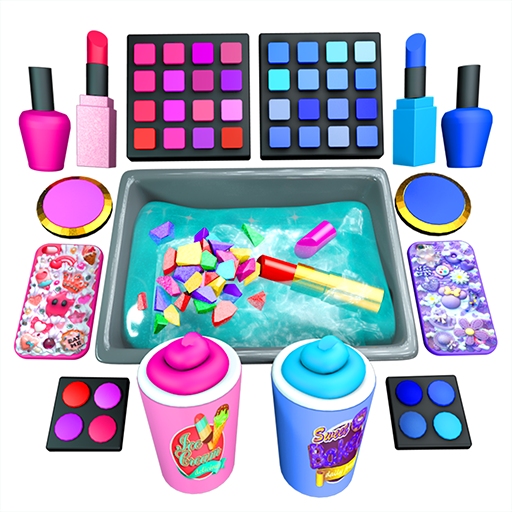Whether you own one of the best gaming PCs or laptops, ensuring the safety and accessibility of your data is crucial. Even with a top SSD or sizable external hard drives storing your files, photos, and other essential content, nothing beats the convenience and security of a Network Attached Storage (NAS) drive. Our top recommendation is the Synology DiskStation DS224+, a stellar choice for efficient data management.
TL;DR – These are the Best NAS Devices:
 Our Top Pick### Synology DiskStation DS224+
Our Top Pick### Synology DiskStation DS224+
0See it at Amazon ### UGREEN NASync DXP2800
### UGREEN NASync DXP2800
0See it at Amazon ### Synology DiskStation DS223j
### Synology DiskStation DS223j
0See it at Amazon ### Asustor Lockerstor 2 AS6602T
### Asustor Lockerstor 2 AS6602T
0See it at Amazon ### Synology DiskStation DS1821+
### Synology DiskStation DS1821+
0See it at Amazon ### QNAP TS-264-8G
### QNAP TS-264-8G
0See it at Amazon ### Synology DiskStation DS923+
### Synology DiskStation DS923+
0See it at Amazon ### ioSafe Duo Pro
### ioSafe Duo Pro
0See it at ioSafe
The best NAS drives offer substantial storage capacity and integrate seamlessly with your home network, facilitating swift data transfers across your devices. Whether it's smartphones, tablets, desktops, or laptops, a NAS allows for simultaneous connections and easy synchronization, making it ideal for managing digital media libraries. However, given their cost, selecting the right NAS is crucial. Here, we've highlighted eight excellent options tailored for different needs.
Synology DiskStation DS224+
Best NAS
 Our Top Pick### Synology DiskStation DS224+
Our Top Pick### Synology DiskStation DS224+
0The Synology DiskStation DS224+ is an easy-to-use, high-speed NAS equipped with two drive bays, dual Gigabit LAN ports, a robust Intel Celeron processor, and 2GB of upgradable RAM. It's perfect for those who want a capable yet straightforward NAS solution. With storage expandable up to 32TB and support for RAID 1 configurations, it ensures your data is both accessible and secure. The dual LAN ports enhance connectivity with Link Aggregation or network failover support, although a multi-gig LAN port would be a welcome addition.
Synology's user-friendly interface and versatile apps allow you to use the DS224+ for various tasks, such as storing security camera footage, running a Plex server, or safely storing files and photos. Thanks to its Intel Celeron J4125 2.0GHz quad-core processor and upgradable 2GB DDR4 RAM, it handles 4K media transcoding, file management, and video streaming with ease.
See it at Amazon
Product Specifications Connection: Ethernet, USB 3.2 RAID Level: SHR, JBOD, RAID 0, RAID 1 Storage: 2 x 3.5"/2.5" bays Size: 9.02" x 9.13" x 6.5"
PROS
- Easy-to-use interface
- Fast quad-core processor
CONS
- No multi-gig LAN port
UGreen NASync DXP2800
Best Budget NAS
 ### UGREEN NASync DXP2800
### UGREEN NASync DXP2800
0The UGreen NASync DXP2800 combines quality hardware with a stylish design at a midrange price, making it an excellent budget-friendly NAS. It features dual drive bays and is powered by an Intel N100 quad-core processor with 8GB of RAM, ensuring it's ready for high-quality video libraries and smooth hardware transcoding.
UGreen's comprehensive OS simplifies setup and network configuration, and added security features like two-factor authentication protect your data. While it doesn't come with native Plex support, installing it via Docker is straightforward and performs well. With dual SATA drive bays supporting up to 24TB each and two M.2 slots for NVMe SSDs up to 8TB, you have ample storage options. The 2.5Gb ethernet port ensures fast file transfers, complemented by HDMI, USB-C, and USB-A ports for versatile device connectivity.
See it at Amazon
Product Specifications Connection: Ethernet, USB, HDMI RAID Level: JBOD, RAID 0, RAID 1, Basic Storage: 2 x 2.5"/3.5" bays, 2 x M.2 PCIe NVMe slots Size: Not listed
PROS
- Comprehensive OS and apps
- Multi-gig ethernet
CONS
- No native Plex
Synology DiskStation DS223j
Most Affordable NAS
 ### Synology DiskStation DS223j
### Synology DiskStation DS223j
0The Synology DiskStation DS223j is an ultra-affordable and user-friendly NAS, perfect for beginners or those with simpler storage needs. It features Synology’s acclaimed DiskStation Manager (DSM) OS, which offers a wide range of applications for seamless file storage and access across devices.
Though built primarily from plastic and requiring a screwdriver for drive installation, its reliability and ease of use are unmatched in its price range. It supports up to 32TB of storage but lacks M.2 slots for caching and a multi-gig ethernet port for faster transfers.
See it at Amazon
Product Specifications Connection: Ethernet, USB RAID Level: Basic, JBOD, RAID 0, RAID 1, SHR Storage: 2 x 3.5" bays Size: 6.5" x 3.94" x 8.9"
PROS
- Reliable hardware
- Easy to use
CONS
- Lacks multi-gig ethernet port
Asustor Lockerstor 2 AS6602T
Best NAS for Power Users and Professionals
 ### Asustor Lockerstor 2 AS6602T
### Asustor Lockerstor 2 AS6602T
0The Asustor Lockerstor 2 AS6602T is ideal for power users and professionals, featuring an Intel Celeron quad-core processor and 4GB of upgradable RAM. Its two drive bays support both 2.5-inch and 3.5-inch SATA drives, and two additional M.2 PCIe NVMe slots offer even faster storage options.
With dual 2.5Gb ethernet ports supporting link aggregation for up to 5Gb connectivity, it's perfect for speedy backups, virtualization, or a powerful media center. The HDMI 2.0 port and support for 10-bit 4K hardware decoding enable a superior 4K HDR media experience.
See it at Amazon
Product Specifications Connection: Ethernet, USB 3.0, HDMI RAID Level: JBOD, RAID 0, RAID 1 Storage: 2 x 3.5"/2.5" bay, 2 x M.2 PCIe NVMe slots Size: 9.06" x 4.25" x 6.44"
PROS
- Dual M.2 PCIe NVMe slots for additional storage
- Supports 10-bit 4K hardware decoding
CONS
- Drive installation is more involved
Synology DiskStation DS1821+
Best Multi-Bay NAS
 ### Synology DiskStation DS1821+
### Synology DiskStation DS1821+
0For those requiring vast storage, the Synology DiskStation DS1821+ offers eight drive bays with a total capacity of 128TB and M.2 2280 NVMe slots for high-speed caching. Its high price tag is justified by its expandability and robust performance.
With hot-swappable drives and support for expansion units up to 18 bays, it's future-proofed for growing storage needs. The quad-core AMD Ryzen CPU and 4GB of upgradable DDR4 ECC memory ensure smooth operation across all your devices.
See it at Amazon
Product Specifications Connection: Ethernet, USB 3.2 RAID Level: JBOD, RAID 0, RAID 1, RAID 5, RAID 6, RAID 10, Synology Hybrid RAID (SHR) Storage: 8 x 3.5"/2.5" bay, 2 x M.2 PCIe NVMe slots Size: 18.2" x 14.4" x 12.5"
PROS
- Wild 128TB capacity
- Hot-swappable drives
CONS
- Can get noisy
QNAP TS-264-8G
Best NAS for Media Streaming
 ### QNAP TS-264-8G
### QNAP TS-264-8G
0Designed for media streaming, the QNAP TS-264-8G features dual 2.5Gb Ethernet ports and a 4K HDMI output, making it perfect for centralizing your media library. Its compact design and powerful internals, including an Intel Celeron N5105/N5095 quad-core processor and 8GB of DDR4 memory, ensure smooth 4K video streaming with hardware transcoding.
With two drive bays for substantial storage and additional PCIe Gen 3 slots for fast caching, it's well-equipped to handle large media files and multiple streams simultaneously. However, mastering its software might require some learning.
See it at Amazon
Product Specifications Connection: Ethernet, USB 3.2, HDMI RAID Level: RAID 0, RAID 1, RAID 5, RAID 6, RAID 10, JBOD Storage: 2 x 3.5"/2.5" bay, 2 x M.2 PCIe slots Size: 8.1" x 6.6" x 4.1"
PROS
- Compact design
- Impressive hardware
CONS
- Software is harder to master
Synology DiskStation DS923+
Best Network Attached Storage for RAID Configurations
 ### Synology DiskStation DS923+
### Synology DiskStation DS923+
0The Synology DiskStation DS923+ is ideal for those seeking robust data backup with multiple RAID configurations. It offers four drive bays for ample storage and the flexibility to run redundancy with various RAID types, including RAID 0, RAID 1, RAID 5, RAID 6, RAID 10, Synology Hybrid RAID (SHR), Basic, and JBOD.
Built for 3.5-inch and 2.5-inch drives, it includes two M.2 2280 NVMe SSD slots for fast caching. Powered by a dual-core AMD Ryzen processor and 4GB of upgradable DDR4 RAM, it runs on the user-friendly DSM operating system, ensuring efficient setup and management.
See it at Amazon
Product Specifications Connection: Ethernet, USB 3.2, eSATA RAID Level: RAID 0, RAID 1, RAID 5, RAID 6, RAID 10, Synology Hybrid RAID (SHR), Basic, JBOD Storage: 4 x 3.5"/2.5" bay, 2 x M.2 PCIe slots Size: 6.5" x 7.8" x 8.7"
PROS
- Offers various RAID levels
- Expandable storage and RAM
CONS
- No multi-gig LAN port
ioSafe Duo Pro
Best Rugged NAS
 ### ioSafe Duo Pro
### ioSafe Duo Pro
0While not technically a NAS, the ioSafe Duo Pro drive offers unparalleled protection against fire and water, with an IP68 rating for submersion up to 10 feet for 72 hours. It also supports various RAID configurations for added data security and features robust, long-lasting drive bays.
ioSafe provides data recovery services, ensuring your data remains safe even in the face of physical damage. To use it as a NAS, you'll need to share it through an always-on computer or connect it directly to your router via USB.
See it at ioSafe
Product Specifications Connection: USB 3.2 RAID Level: RAID 0, RAID 1, JBOD, SPAN Storage: 2 x 3.5"/2.5" bays Size: 11.50" x 5.91" x 9.06"
PROS
- Fireproof and water-resistant
- Offers two robust, long-lasting drive bays
CONS
- Not designed to be a NAS
What to Look for in NAS
NAS devices are essential for those looking to streamline their network storage needs. If you and your family or housemates share the same network, a NAS allows you to centralize file sharing across all connected devices. It's also an efficient solution for backing up multiple computers simultaneously.
What are you using it for?
If you need to access the same tools or files across multiple devices, a NAS can be invaluable. It's not just about storage; it's about accessibility too. For those with extensive media libraries, a NAS can be transformed into a Plex server, providing seamless access to movies, TV shows, and music across your home network.
Go diskless? How many bays?
Most NAS devices are sold without disk drives, requiring you to purchase them separately. This can be advantageous if you already own compatible drives, but always check the manufacturer's recommendations for optimal performance. The number of bays in a NAS determines its potential storage capacity; two or more bays are generally recommended, with multimedia systems often requiring more.

 Latest Downloads
Latest Downloads
 Downlaod
Downlaod




 Top News
Top News









